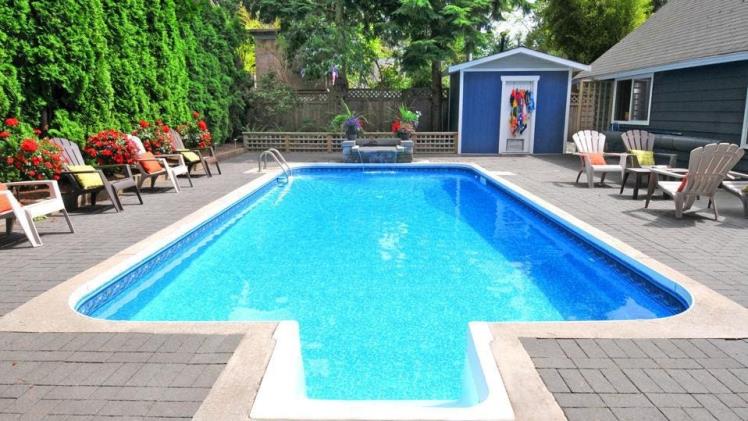When it comes to luxury and relaxation, few things can match the allure of a lap pool. Whether you’re an avid swimmer looking for a way to maintain your fitness routine or someone seeking a serene escape within the confines of your property, lap pools offer a perfect solution. However, before diving into the world of lap pools, it’s essential to understand the various factors that contribute to their cost. In this article, we’ll take an in-depth look at lap pool cost, considering both the monetary investment and the long-term benefits they provide.
Understanding Lap Pools
Before delving into the costs associated with lap pools, it’s important to grasp what they are and what makes them unique. Unlike traditional recreational pools, which are often larger and shallower, lap pools prioritize length over width, allowing swimmers to maintain a continuous, uninterrupted swim.
They’re particularly popular among fitness enthusiasts, athletes, and individuals who enjoy the therapeutic benefits of swimming. Not only do lap pools provide a dedicated space for exercise, but they can also add aesthetic value to your property.
Factors Affecting Lap Pool Costs
1. Size And Dimensions
The size and dimensions of the lap pool are one of the most significant factors influencing its cost. Lap pools are typically longer than traditional pools, which requires more materials and labor for construction. The width of the pool can also impact the cost, as wider pools demand more excavation and additional materials.
2. Location
The location of the lap pool, whether it’s indoor or outdoor, plays a role in determining the cost. Indoor lap pools may require additional ventilation and dehumidification systems to prevent moisture-related issues. On the other hand, outdoor lap pools might necessitate features like heating systems to extend the swimming season, which can contribute to the overall cost.
3. Material And Finish
The materials used for the construction of the lap pool can significantly influence the cost. You have a variety of options, including concrete, fiberglass, and vinyl. Concrete is often preferred for its durability and customization possibilities, but it can be more expensive compared to other materials. Additionally, the type of finish you choose, such as tiles or plaster, will also impact the cost.
4. Additional Features
The inclusion of additional features can add both functionality and cost to your lap pool. Features like lighting, waterfalls, diving boards, and heating systems can enhance the aesthetic appeal and usability of the pool but will contribute to the overall expense.
5. Site Preparation
The condition of the site where the lap pool will be installed can affect the cost. If the site requires significant excavation, grading, or reinforcement due to soil conditions, the associated costs can rise.
6. Labor And Installation
Labor and installation costs are another important consideration. The complexity of the design, the skill level of the construction team, and local labor rates can all impact the overall cost.
7. Maintenance And Operating Costs
While not part of the initial installation cost, it’s crucial to account for ongoing maintenance and operating expenses. This includes water treatment, cleaning, heating (if applicable), and regular upkeep to ensure the lap pool remains in optimal condition.
Cost Breakdown
To provide a more concrete understanding, let’s break down the potential costs associated with installing a lap pool.
Basic Installation: On the lower end, a basic lap pool installation might start at around $50,000. This could include a modest-sized pool with standard materials and minimal features.
Mid-Range Installation: For a more customized lap pool with additional features and higher-quality materials, the cost could fall in the range of $70,000 to $100,000.
High-End Installation: For a larger, luxury lap pool with premium finishes, advanced features, and intricate designs, costs can exceed $100,000 and go up to several hundred thousand dollars.
Depending on the size and features of the pool, annual maintenance can add an additional $1,000 to $5,000 to these costs.
Long-Term Benefits
While the upfront costs of installing a lap pool might seem substantial, it’s important to consider the long-term benefits they offer:
Property Value: A well-designed lap pool can significantly increase the value of your property. It’s not only an attractive feature for potential buyers but also a reflection of a luxurious and healthy lifestyle.
Convenience: Having a lap pool on your property eliminates the need for a gym membership or traveling to a public pool for your fitness routine. This convenience can save you both time and money in the long run.
Aesthetic Appeal: Lap pools can transform your outdoor or indoor space, enhancing its visual appeal. With the right landscaping and design, a lap pool can become the centerpiece of your property.
Relaxation And Stress Relief: Swimming is known for its therapeutic benefits, offering relaxation and stress relief. A lap pool provides a private oasis where you can unwind and rejuvenate.
Conclusion
Installing a lap pool is a significant investment that comes with both upfront costs and long-term benefits. The entire cost of a lap pool can vary depending on dimensions, location, materials, and labor. While it’s important to be prepared for the financial commitment, the rewards in terms of fitness, property value, convenience, and relaxation can make it a worthwhile endeavor. If you’re considering a lap pool, it’s advisable to consult with pool professionals, gather multiple quotes, and carefully plan out your project to ensure a successful and satisfying outcome.

